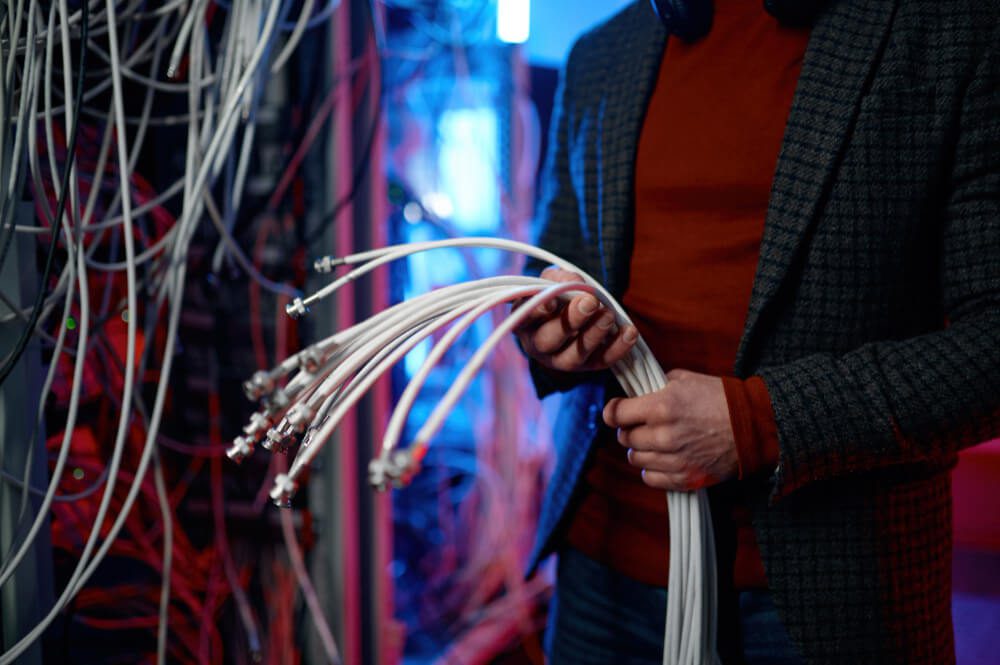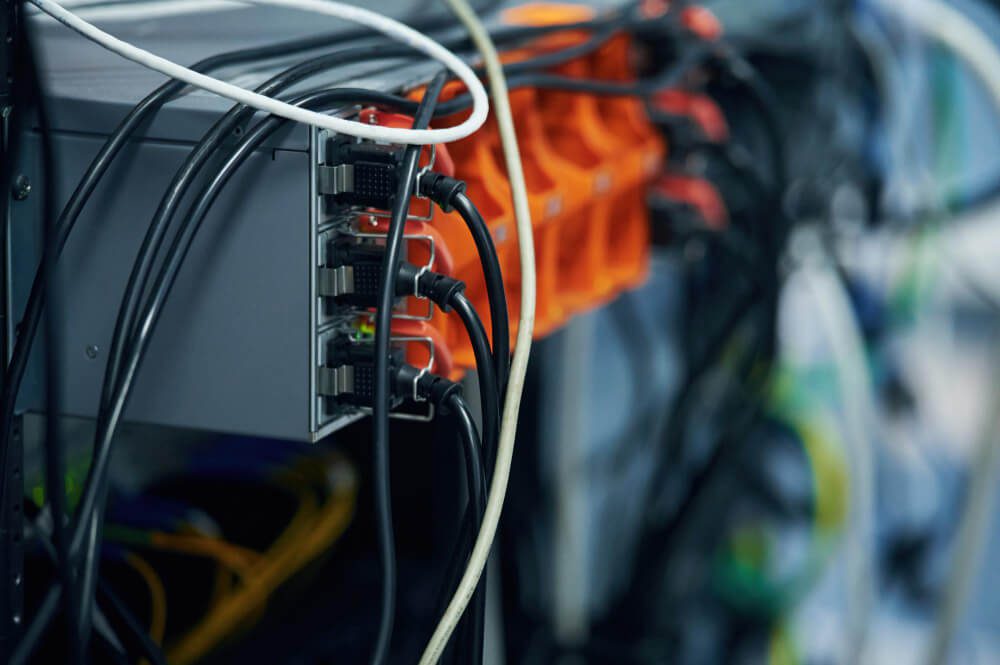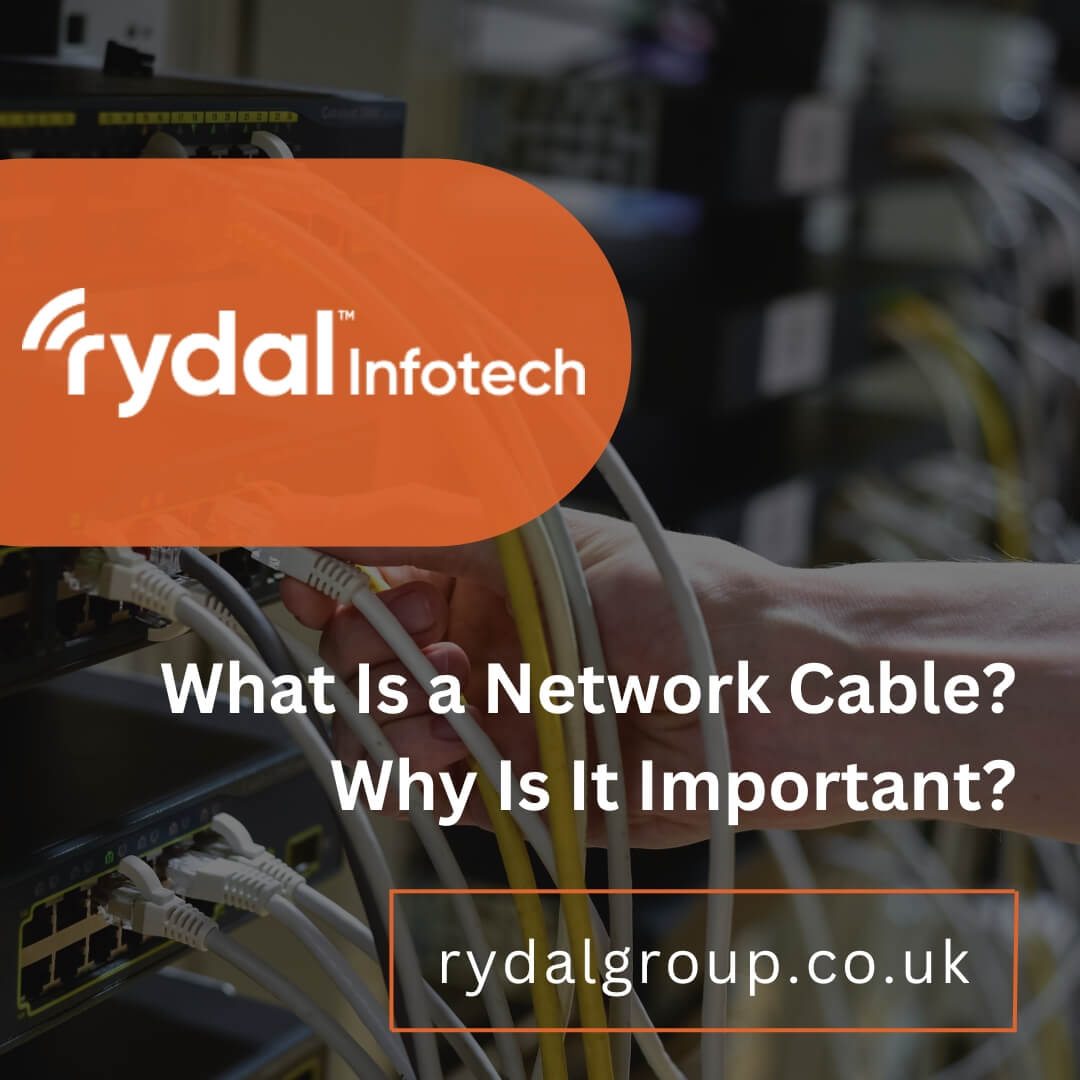If you’ve ever set up a gaming system, changed out an outdated internet cable, or even just connected your computer straight to a router, you’ve worked with a network cable. The foundation of our networked world consists of these wires. They function as data highways, enabling “talk” between computers, printers, and other devices and internet access.
Different types of network cables are made to meet certain purposes – some are for longevity, others for speed. Though we’ll go into more detail on those later, knowing the fundamentals of computer cabling will help you configure your network more effectively.
What Does a Network Cable Do?
Consider a network cable to be a lightning-fast messenger. Assume you would like to send an email. When you click “send,” your computer converts the email into little electrical signals. These signals have a path to follow, provided by the network cable, as they rush from your computer to your router and finally to their intended location.
Network cables establish the physical connections that enable direct communication between devices on the same network, so it’s not simply about the Internet. Such a network may join your laptop, desktop, and printer together. The physical system that provides connectivity to homes and businesses is made up of a large part of network cables.
Types of Network Cables

Now that you know the fundamental functions of network cables, let’s explore the various kinds that are available. Choosing the appropriate one can significantly impact the functionality of your network.
1. Twisted Pair Cables
The mainstays of contemporary networking are twisted pair connections. There are pairs of insulated copper wires twisted together inside the outer jacket. Not only does this twisting improve the signal’s appearance, but it also lessens interference and increases dependability.
Terms like Cat5e, Cat6, and Cat6a will be used frequently. These relate to various classifications of cables with twisted pairs. Higher category numbers can typically handle more data and support faster speeds.
There are two primary varieties of twisted pair cables:
- Unshielded Twisted Pair (UTP)
UTP, or unshielded twisted pair, is the most widely used kind. They rely on the wires’ twisting to provide some shielding from interference.
- Shielded Twisted Pairs (STP)
These increase the protection against electromagnetic interference by encircling the wire pairs with an additional layer of shielding, usually foil. They are, hence, appropriate for loud settings.
2. Coaxial Cables
Twisted pair and coaxial cables, or just “coax,” are not made of the same materials. They include:
- Central Conductor: The signal is carried by a single copper wire core.
- Insulation: A layer of dielectric material is placed around the core to keep the core electrically isolated.
- Shield: To prevent interference, a braided metal mesh is used.
- Outer Jacket: The entire cable is covered in a plastic protection layer.
Coaxial cables were formerly the industry standard for both early computer networks and TV connections to cable signals. Even though twisted pairs and fibre optic cables have mostly taken their place in modern networking, you may still come across them in some situations.
3. Fiber Optic Cables
Among network cables, fibre optic cables are kings when it comes to speed. They use light pulses transmitted through extremely fine glass or plastic fibres to convey data instead of electrical signals. They gain two significant benefits from this:
- Speed: The data transmitted through fibre optic connections can move at the speed of light.
- Length: Fiber optic cables allow data to go far farther with minimal signal loss.
A fibre optic cable can be either Single-mode or Multi-mode. Single mode is ideal for extended distances, using a laser to send light through a very thin glass core. On the other hand, multi-mode is typically seen in data centres; it has a somewhat thicker core and uses LEDs, which is ideal for shorter distances.
Why Are Network Cables Important?

The different types of network cables have been examined, but why are they important? Let’s examine the useful benefits they provide to our interconnected life.
Network Speed and Performance
Your network’s speed and general performance might be strongly impacted by the kind of network cable you choose. This is the reason why:
- Bandwidth
Consider bandwidth in terms of freeway lanes. A higher volume of data can flow at once through the additional lanes included in higher-category cables (such as Cat6 or Cat7). This facilitates more responsive web experiences, seamless video streaming, and quicker file transfers.
- Device Matching
Use appropriate cables to couple your devices to get the most out of them. Even with an ultra-fast internet service and a top-tier router, using an outdated, slower connection can cause network bottlenecks.
Reliability and Security
There are benefits to network cables that go beyond speed. They improve the security and stability of your connections:
When compared to wireless networks, physical connections frequently offer a more dependable and continuous connection. They are less vulnerable to physical obstacles, walls, and other devices interfering with Wi-Fi transmissions.
An additional layer of defence against electromagnetic interference (EMI) is provided by shielded cables, such as STP. This can be quite important in places with a lot of electrical equipment since it guards against data interception and eavesdropping.
Future-Proofing
Rapid technological advancements and rising network speeds are constants. Purchasing the appropriate network cables now can prevent hassles in the future.
New gadgets, such as 4K/8K TVs and top-tier gaming setups, require quicker connections. Selecting cables with increased bandwidth capacity guarantees you won’t encounter a performance snag when upgrading.
Although higher-quality cables can initially cost a little more, they should last longer and save you from replacing them as your technology needs change.
Final Word
Even though we live in a wireless society, the internet is buried behind network cables. These cables guarantee that information travels swiftly and securely, from the straightforward twisted pair cable that runs to your printer to the blazing-fast fibre optics that link data centres.
The speed, dependability, and future-proofing of your network can all be significantly impacted by the type of network cables you choose. The sorts of cables and their uses are crucial to know whether you’re managing a major IT infrastructure or setting up a home office.
Plenty of tools are available to assist you in choosing the proper cable, even though it could initially seem daunting. If you need help with your configuration, go to a network professional or search for instructions online. Always look for the cable that meets your specific needs in terms of distance, speed, and security; price isn’t everything.
The next time you plug something in, stop and think about the sophisticated electronics hidden beneath that ordinary cord. It serves as a gateway to the huge connected world we rely on daily, not just a physical connection.

